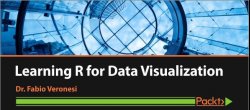
Easily design responsive websites that can adapt to any device regardless of screen size using HTML 5 and CSS3
About This Responsive Web Design video course
- Learn how to create fluid styles that flow to fill a browser of any size
- Discover the best design and coding practices in HTML5 and CSS3 for flexible layouts
- Contains everything you need to know to create simple to complex responsive sites starting from a design mockup to implementing it as a finished product
Course In Detail
There’s never been a greater range of screen sizes of tablets, smartphones, and even televisions and associated web view user experiences to consider. Web pages being built to be responsive provide the best possible version of their content to match the viewing devices of not just today’s devices but tomorrow’s too.
This video course walks you through crafting responsive websites that provide an optimal viewing experience on any device using HTML5 and CSS3.
By following this structured video course, you will learn how to convert fix-width layouts to responsive layouts, contain a fluid layout with maximum or minimum properties, write syntax for a media query, select breakpoints, write HTML to embed all the saved elements into a page, and add CSS to your site ensuring that you have the skills to create your very own responsive website quickly and efficiently.
Responsive Web Design – From Concept to Complete Site starts with an overview of the technology, the best practices to follow, and then moves on to a complete implementation of a responsive site using HTML5 and CSS3 media queries.
After learning the essentials of responsive web design in the introductory section, you will walk through splitting a mockup into images and content areas, defining a fluid grid using those divisions, creating a percentage-based layout for the fluid grid with CSS, and then begin creating a full-functional responsive page. The latter section contains hands-on exercises that will walk you through all the HTML5 and CSS3 code required to build your sample page.
This course ends with an overview on the future of web design, the features you can use today, and tips on how to remain current in the field.


















